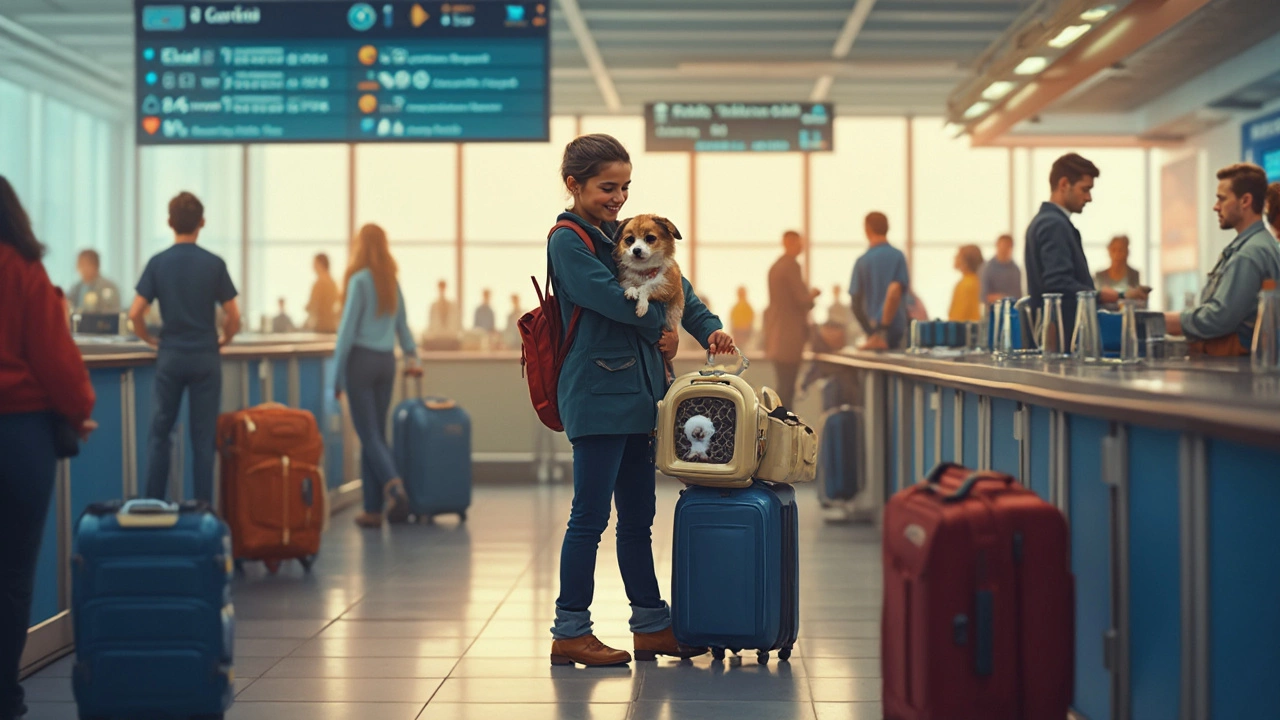Cabin vs Cargo: How to Choose the Best Way to Fly Your Dog
Thinking about taking your dog on a plane can feel like a maze. The biggest fork in the road is whether your pup rides in the cabin with you or in the cargo hold. Both routes have clear pros and cons, and the right choice depends on size, health, budget, and how nervous your dog gets.
When Cabin Travel Makes Sense
Cabin travel is only allowed for small dogs that can fit in an airline‑approved carrier under the seat. The biggest win? Your furry friend stays in sight, hears your voice, and you can check on them any time. Most airlines let you bring the carrier on board at no extra cost, though there may be a small fee for the pet.
Because the cabin is climate‑controlled, the temperature stays steady and the stress of handling is low. If your dog gets anxious on their own, you can hold their favorite toy, speak softly, or give a calming chew. The catch is the size limit – usually 18‑20 lbs total (dog plus carrier). If your pup is a bit bigger, you’ll need to look at cargo.
When Cargo Is the Safer Bet
Cargo isn’t a dumpster; it’s a pressurized, temperature‑controlled part of the plane designed for pets. Airlines require sturdy, airline‑approved crates that open from the front, have ventilation on all sides, and are big enough for your dog to turn around.
The main concerns are temperature extremes on the ground and the handling process. Choose flights that avoid long layovers, extreme hot or cold weather, and always book a direct route when possible. Some carriers offer a “pet‑first” service that loads your crate last and unloads it first, cutting down on wait time.
Health is a big factor. Dogs with heart, lung, or ear issues should generally stay in the cabin if they fit, because the slight pressure changes in cargo can aggravate them. Always get a vet clearance before you book, and ask the vet to write a brief health statement for the airline.
Practical Checklist for Either Option
1. Measure and weigh. Check the airline’s carrier dimensions and weight limits. A good rule: carrier weight + dog weight ≤ 20 lbs for cabin.
2. Get a vet check. Ask for a health certificate within the required time frame (usually 10 days before travel).
3. Book early. Airlines limit the number of pets per flight, so reserve your spot as soon as you know the dates.
4. Acclimate the crate. Let your dog explore the carrier at home for a few days. Put a blanket and a favorite toy inside to make it feel safe.
5. Plan feeding. Give a light meal the night before and avoid a big meal right before take‑off. Offer water up until the hour before boarding.
6. Arrive early. You’ll need extra time for paperwork, security checks, and a quick walk before the flight.
7. Label the crate. Include your contact info, the dog’s name, and any special instructions. A “This way up” sticker helps handlers keep the crate upright.
8. Know the rules. Some airlines don’t accept pets on certain routes or in extreme temperatures. Double‑check the airline’s pet policy before you buy tickets.
Choosing cabin or cargo is a balance of size, health, and peace of mind. If your dog fits and stays calm, the cabin is usually the easiest and most comforting route. If you need the cargo option, pick a reputable airline, use a high‑quality crate, and follow the checklist to keep the journey smooth.
Either way, a little preparation goes a long way. Your dog will thank you with wagging tails when you land, and you’ll avoid the last‑minute scramble that turns a vacation into a headache.

Are Pets Safer in Cabin or Cargo During Flights?
Traveling with pets can be stressful, and deciding whether pets should fly in the cabin or cargo is a big concern for pet parents. The comfort, safety, and regulations related to pet travel vary significantly based on the chosen mode. This article explores key considerations, offers practical tips, and provides insights on how to ensure your furry friend travels safely. Dive in to learn the differences between cabin and cargo travel for pets and make an informed decision for your next trip.
View more